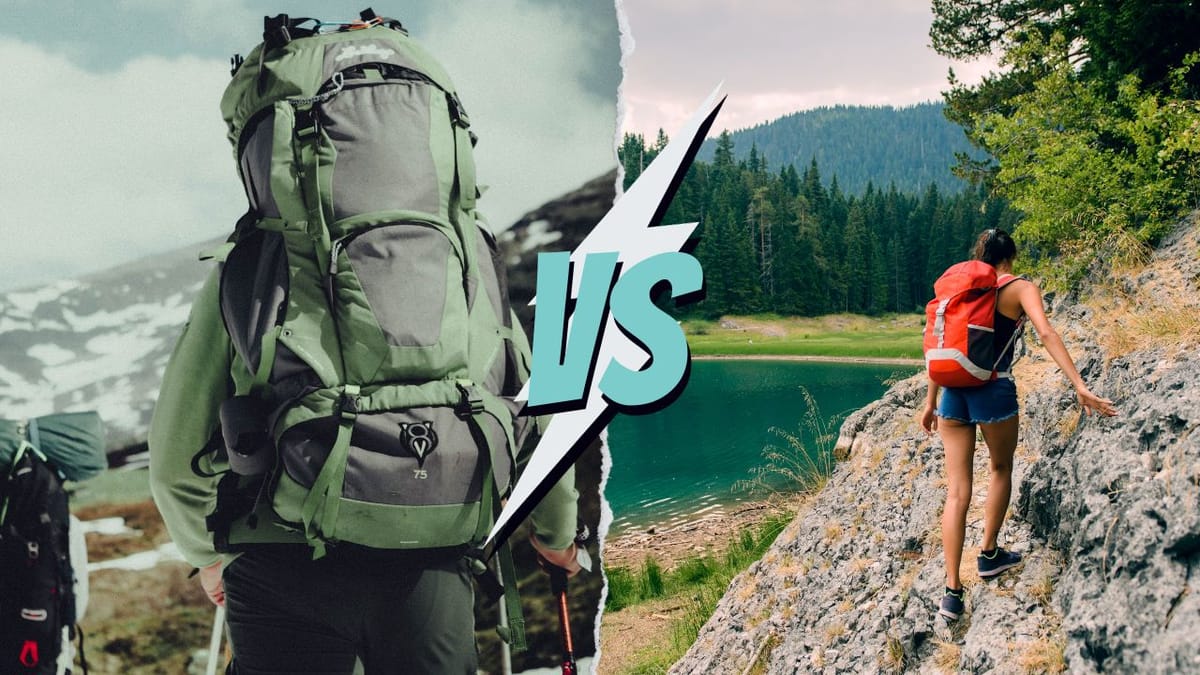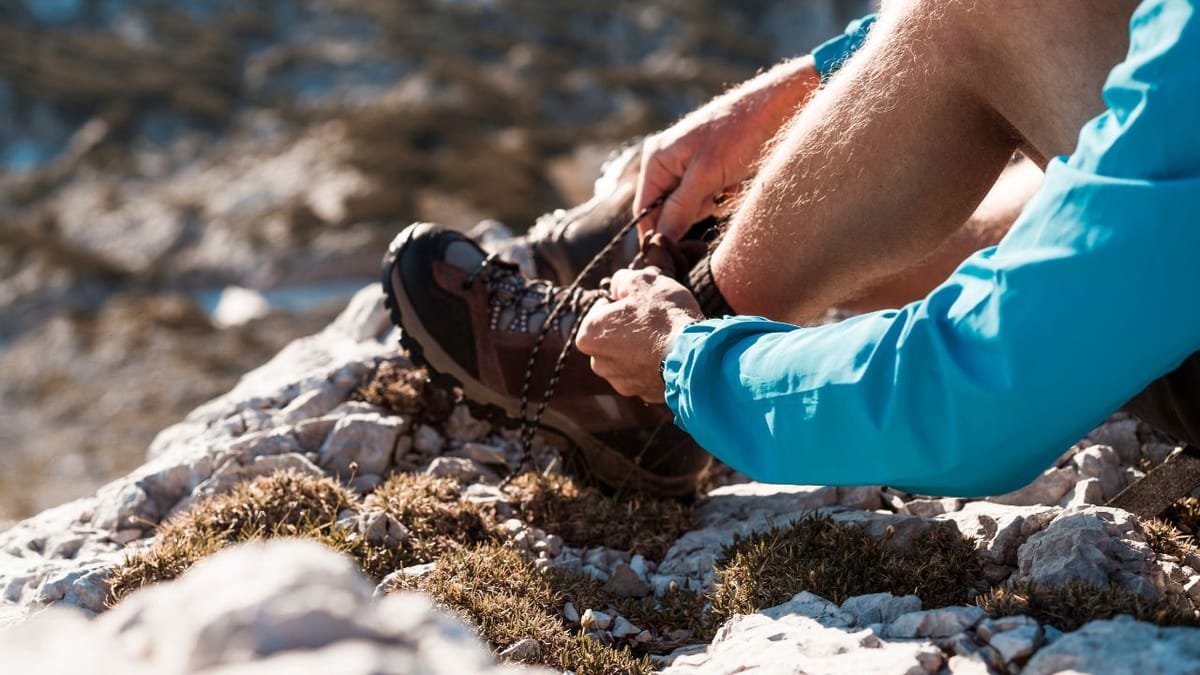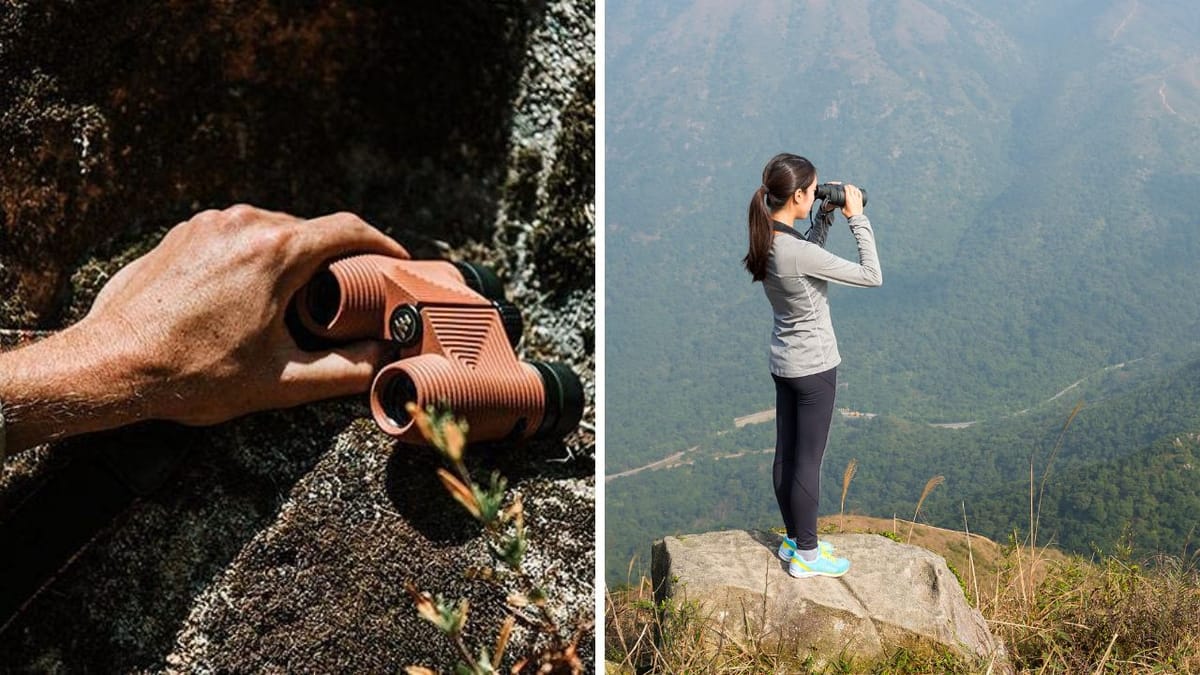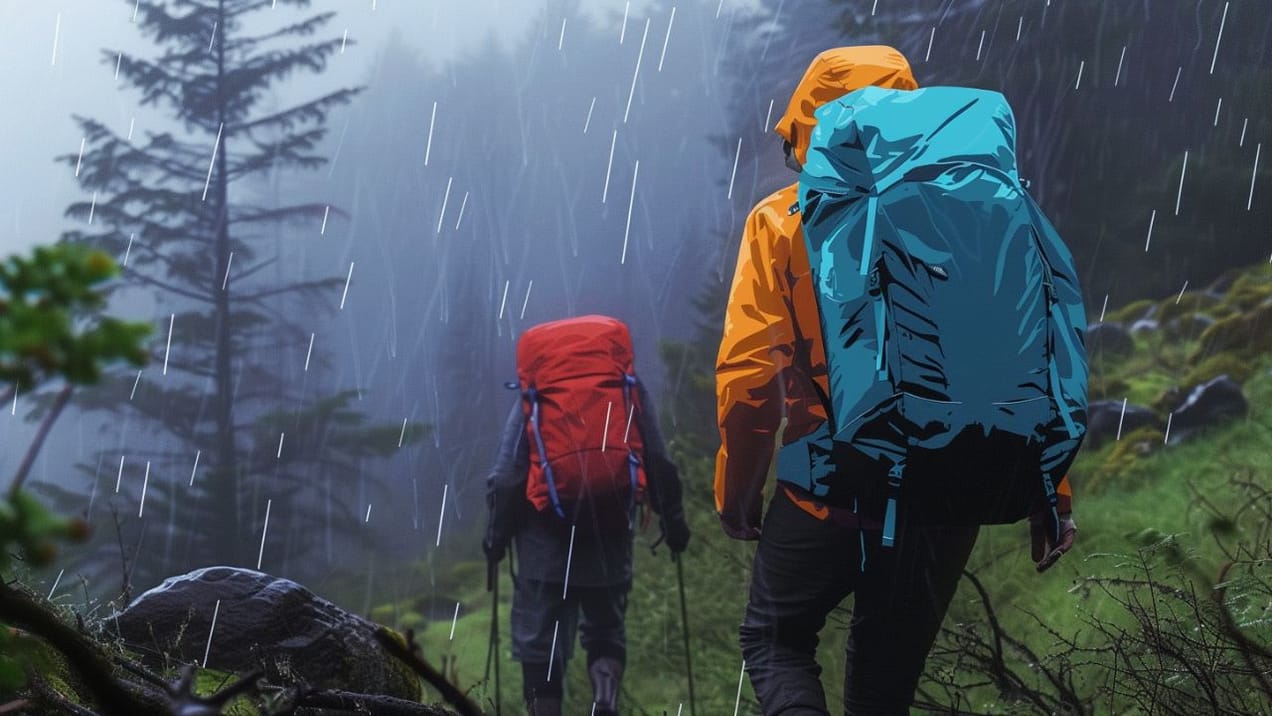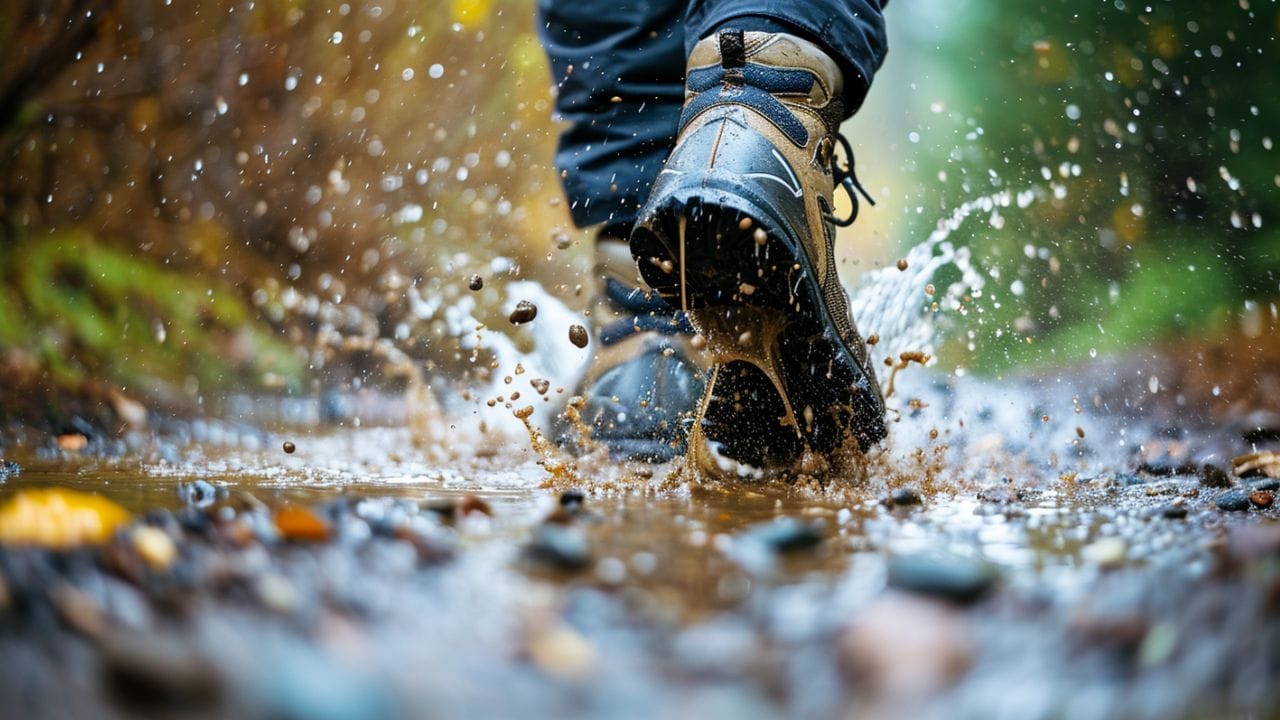
Backpacking Shoes vs Boots: Picking the Right Footwear for Your Trail Adventure
Discover the ultimate guide to choosing between backpacking shoes vs boots for your next trail adventure. Learn the key differences, pros and cons, and expert tips.
When heading out into the great outdoors, the choice between backpacking shoes and boots is one that can impact your comfort, performance, and safety on the trail.
Both options have their pros and cons depending on the type of hike you're embarking on.
Backpacking shoes are known for being lightweight and flexible, offering a comfortable fit without the bulk of traditional boots, which can be an excellent choice for less demanding trails or for those who prefer a more agile feel.
On the other hand, boots typically provide more support and protection, especially for your ankles, which is invaluable on rough or uneven terrain.
They are constructed to handle the rigors of long treks with heavy packs and to shield your feet from the elements. With the variety of designs and materials available, it's essential to consider the specific demands of your hike, such as the length, terrain, and the load you'll be carrying, to make an informed decision on footwear.
Key Takeaways
- Backpacking shoes offer lightness and flexibility for comfortable trekking.
- Boots provide enhanced support and protection on rough terrain.
- The choice of footwear should be based on hike length, terrain, and load.
Analyzing Footwear Types
When you're gearing up for a hike, the kind of footwear you choose can make or break your experience.
Here's where you'll get the rundown on the upsides of hiking boots and the perks of hiking shoes or trail runners.
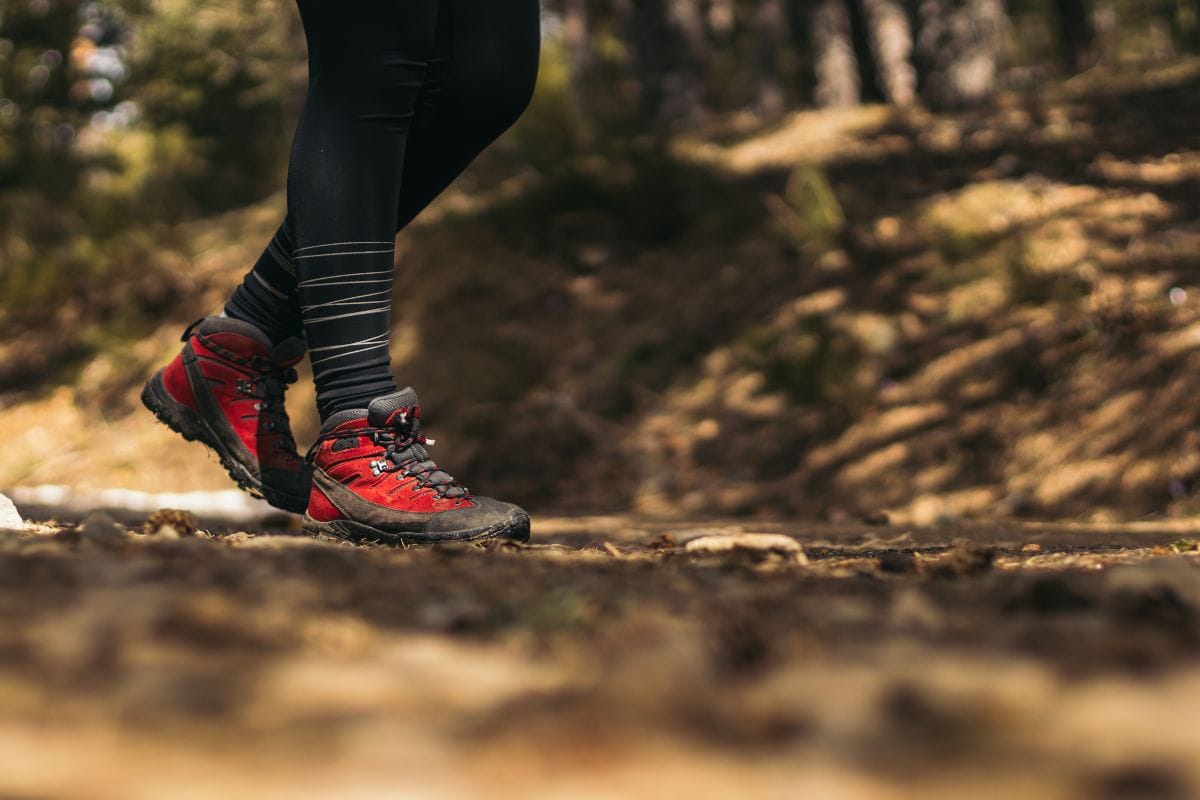
Hiking Boots Advantages
- Durability: Hiking boots are built tough to withstand rough trails. Think of them like your off-road vehicle for feet.
- Ankle Support: If you're trekking with a heavier pack or stomping through uneven terrain, the high-cut design of boots provides that extra bit of ankle stability.
- Protection: With a sturdy toe cap and thicker materials, boots excel at keeping your feet safe from rocks and roots.
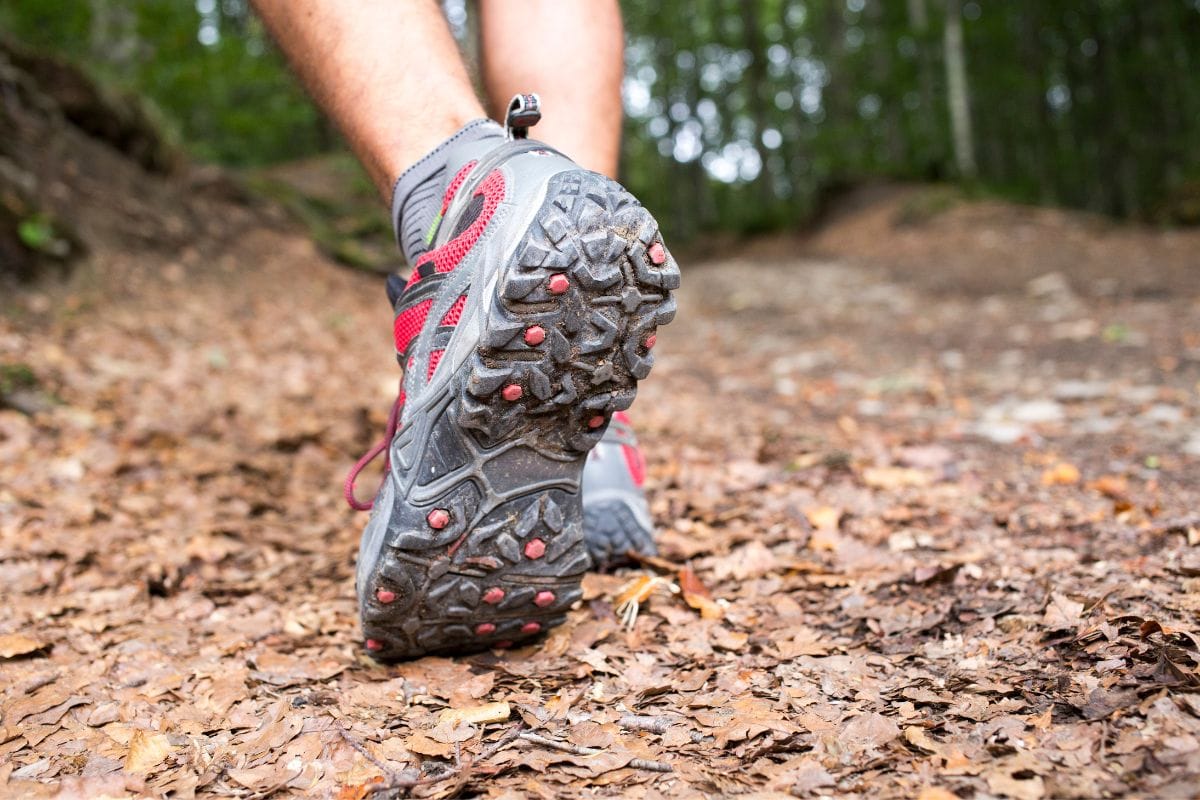
Hiking Shoes and Trail Runners Benefits
- Lightweight: Unlike their bulkier counterparts, these shoes won't weigh you down, making them ideal for quicker jaunts.
- Breathability: You'll find that these shoes keep your feet cooler, thanks to more breathable fabrics.
- Flexibility: For those who prefer feeling the trail under their feet, hiking shoes and trail runners offer more flexibility and a closer ground connection.
Design and Material Considerations
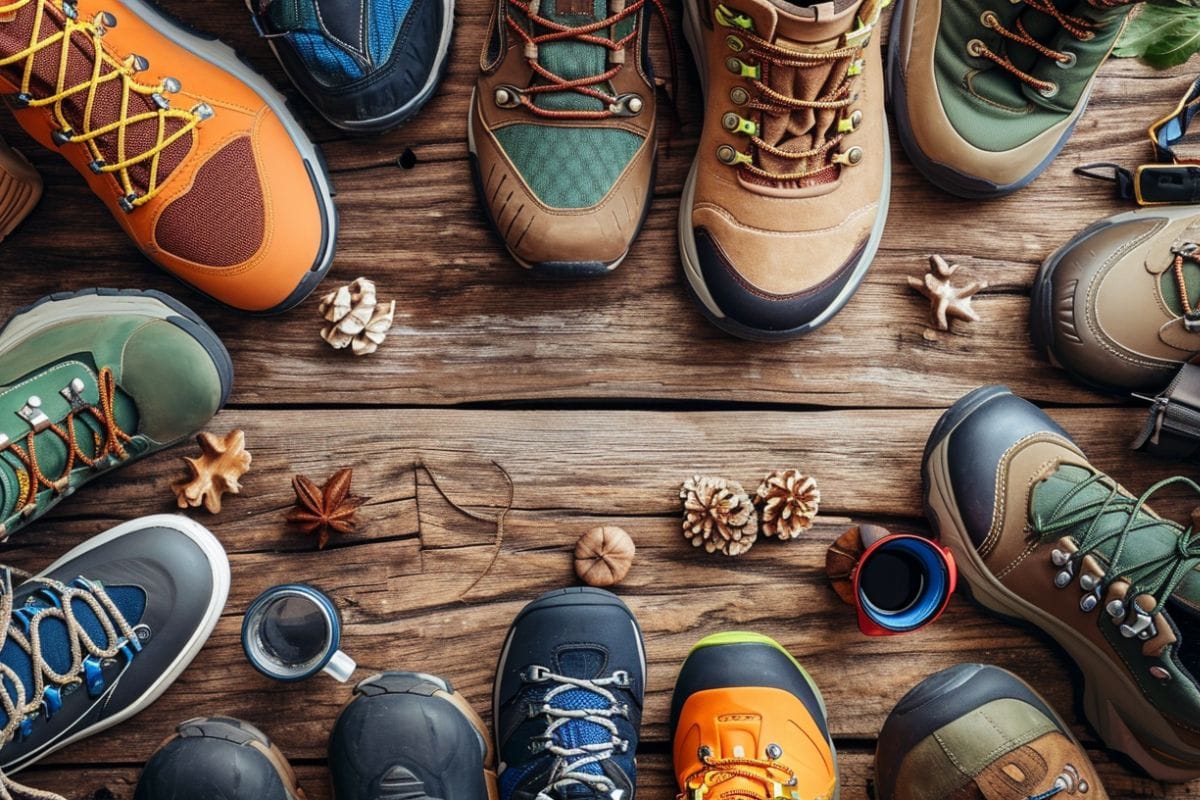
When picking out your hiking footwear, it’s cool to know that materials and design aren’t just about looks. They affect everything from how dry your feet stay to how much support you get on rough trails.
Understanding Waterproof Technologies
Let’s talk waterproofing—because nobody digs squelchy socks on a hike. Leather boots are a classic pick for staving off the wet, but they've gone high-tech with liners like Gore-Tex.
This magic material keeps water out while letting your feet breathe. It’s all about membranes, tiny pores smaller than a water droplet but larger than a molecule of vapor. So, rain can't get in, but your foot sweat escapes with ease.
- Pros of Gore-Tex and similar tech:
- Keeps feet dry
- Provides breathability
- Considerations:
- Can be pricey
- Might need breaking in
The Role of Breathable Fabrics
Coolness and comfort on the trail? Yes, please. Breathable fabrics come into play big time for this.
Your boot’s upper—the part that hugs your foot—isn't just for show. Lighter materials like synthetics or thin leather keep the air moving and your feet less swampy. It's about finding the right vibe of durability and airflow.
- Breathable material perks:
- Less moisture build-up, fewer blisters
- Cooler feet in hot conditions
Bear in mind though, the lighter the material, the less rugged it might be. You'll often see beefier options like full-grain leather when stiffer soles are involved, adding to overall boot weight but upping the lifespan and support.
They're rockstars on rough terrain, but maybe overkill on an easy trail day. Balance is key—weight versus durability, and waterproofing versus breathability. Your feet will thank you!
Support and Protection
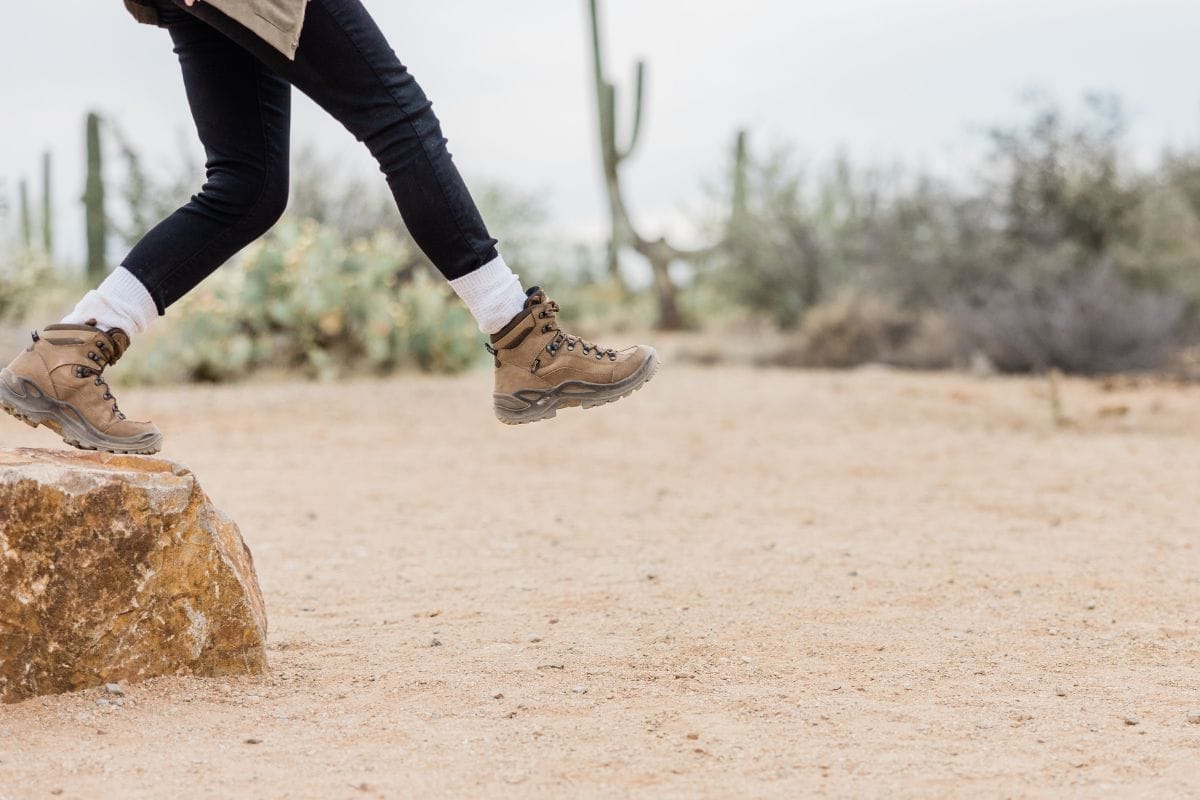
When you're hitting the trails, choosing the right footwear is crucial for your comfort and safety. Your decision influences not only how well your feet are protected but also how stable they'll feel on uneven terrain.
Ankle Support and Stability
Hiking Boots: They're like the trusty friend that's got your back—or in this case, your ankles. With a higher cut, they provide solid ankle support and stability which can be a game-changer on rocky or uneven terrain. These boots are designed to protect against twists and sprains, especially when you're carrying a heavier pack.
Hiking Shoes: Imagine them as your casual buddy for quick jaunts and low-burden trips. They offer a more flexible fit with less restriction and generally less ankle support. For trails that don't throw curveballs at your feet, you might prefer the freedom that these shoes provide.
Traction and Foot Protection
- Traction:
- Hiking Boots - Armed with aggressive tread patterns, boots are your go-to for superior grip. They're literally made to cling onto the ground like a determined climber, which is ideal for steep or slippery trails.
- Hiking Shoes - With a lower profile sole, hiking shoes still give decent traction, but it's a notch down from boots. You're looking at a good grip for well-worn paths and dry conditions.
- Foot Protection:
- Hiking Boots - They're built like a fortress. With tough materials and reinforced toe caps, they're here to shield your feet from rocks, roots, and anything else that's looking to stub your toes.
- Hiking Shoes - They lean more towards comfort with lighter materials. You'll get protection, but it's not on the same level as boots. It's a trade-off—if you're staying on clear paths, it might be a solid choice.
In the end, your choice between hiking boots and shoes will come down to the type of hiking you plan to do and what level of support and protection you feel you need.
Terrain and Trail Type Impact
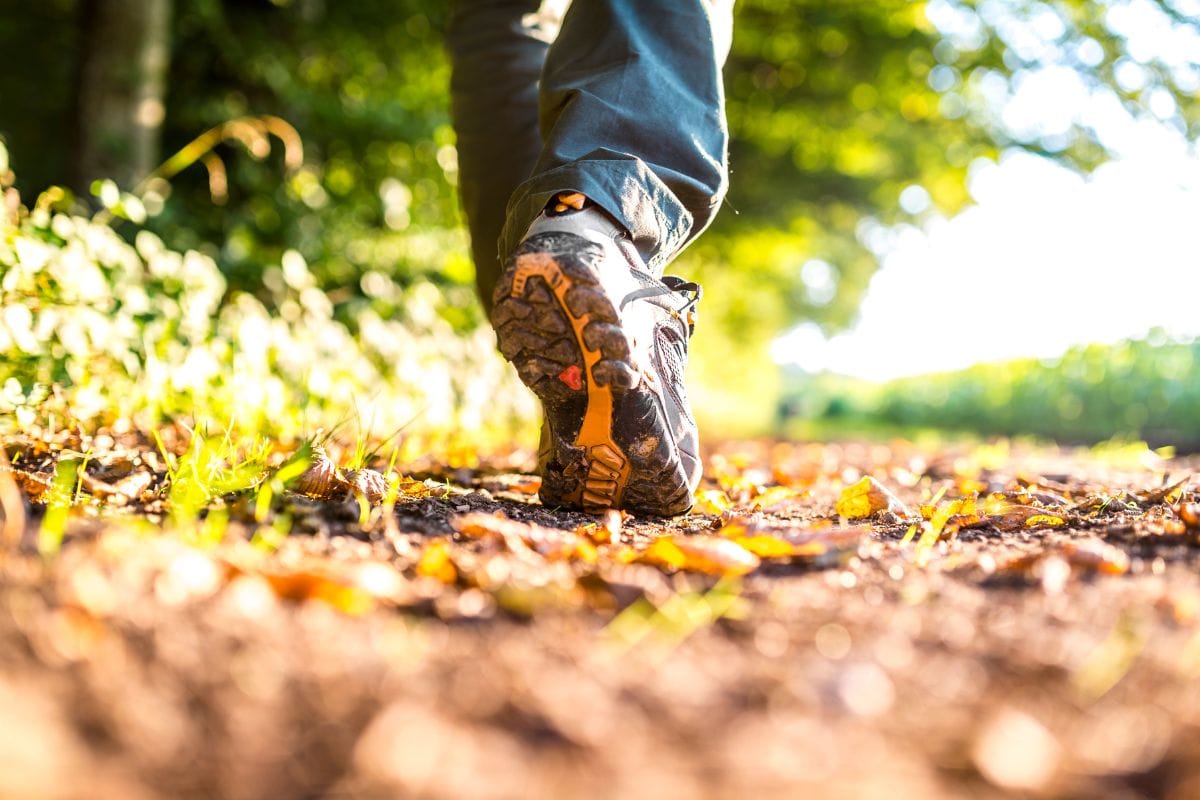
When you pack for a hike, your footwear should match where you'll tread - whether it's a sun-dappled forest floor or the uncompromising ridges of the Continental Divide Trail.
Navigating Rough and Rocky Terrain
Rough terrain demands footwear that offers durability and support.
On rocky paths, like parts of the Appalachian Trail, hiking boots with reinforced toe protection and robust ankle support help shield your feet from bruising and reduce the chance of ankle twists.
The sturdier sole of a boot grips uneven surfaces, lending stability as you traverse over obstacles.
Adapting to Wet Conditions and Trails
For wet conditions, a waterproof or water-resistant shoe is your ally. Both boots and trail runners can come with waterproof membranes, but boots often provide higher water protection due to their taller design.
If you're facing soggy or muddy trails, look for footwear with non-slip outsoles and consider how quickly each option might dry – trail runners tend to win out on drying speed.
Practical Insights for Backpackers
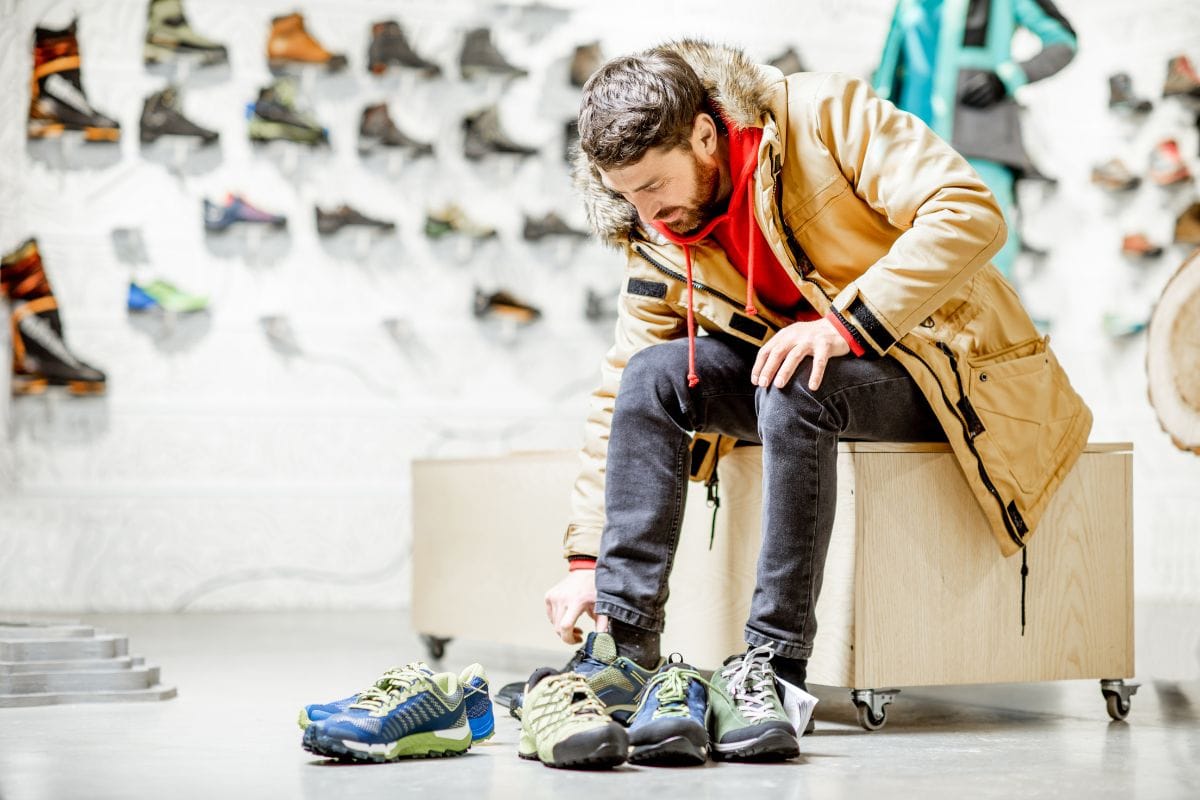
Before lacing up and stepping out on your next adventure, remember that the boots or shoes encasing your feet can make or break your backpacking experience.
Let's talk specifics about getting that fit just right and what you should consider for those longer trails.
Break-In Period and Comfort
Your boots aren't going to be a perfect fit right out of the box.
Expect a break-in period where the material conforms to the contours of your feet. This is essential to avoid blisters and discomfort during your treks.
For those beefier backpacking boots, the break-in can be longer, so plan your shorter trips to ease into them.
For day hiking, you might opt for hiking boots or shoes that generally have a shorter break-in period, allowing for a quicker start to your journey.
Considerations for Long-Distance Hiking
If you're a thru-hiker or planning long-distance treks, your footwear goes beyond mere comfort. It's about durability and support.
Backpacking boots, designed for the long haul, offer extra cushioning and keep your feet warm over varied terrain. They're built tough, but remember, they can tire your legs out quicker.
Long-distance hikers should weigh the pros like added durability and stability against the cons such as reduced ankle mobility and heavier steps. Keep in mind, a well-fitted boot means more enjoyable miles—so take the time to find the right pair tailored to your ambitions.
Frequently Asked Questions
When you're comparing backpacking footwear, it's not just about the look; you're choosing between different levels of support, durability, and comfort. Let's walk through some common questions you might have.
What are the advantages of hiking boots compared to trail runners?
Hiking boots offer better ankle support and are designed to withstand rugged terrain, which can be a game changer on challenging trails. Their durable construction often means they are more enduring than lighter footwear options.
How do day hiking boots differ from backpacking boots?
Day hiking boots are generally lighter and more flexible, offering comfort for shorter treks, while backpacking boots provide more support and protection for the additional weight and distance involved in multi-day trips.
For women, are there specific considerations when choosing between backpacking shoes and boots?
Yes, women's backpacking footwear often features designs tuned to a narrower fit, higher arches, and smaller heel sizes, ensuring a better fit and tailored support crucial for long treks.
Why might someone pick hiking boots over sneakers for their outdoor adventures?
Hiking boots are specifically built to tackle uneven and slippery terrain with superior traction and protection against injuries from rocks or roots that standard sneakers could leave your feet vulnerable to.
Can you highlight the key differences between hiking shoes and boots?
Certainly, hiking shoes are often lighter, offering more flexibility, while boots come with a higher cut lending to greater ankle support, sturdiness, and water resistance ideal for tough, muddy trails.
When deciding on footwear for hiking, what factors should influence the choice between shoes and boots?
Consider the terrain, climate, length of hike, and pack weight. Trail runners or hiking shoes might serve well for a light adventure, but for treacherous paths or if you're carrying heavy gear, boots are your best bet for safety and support.
Before You Go...
